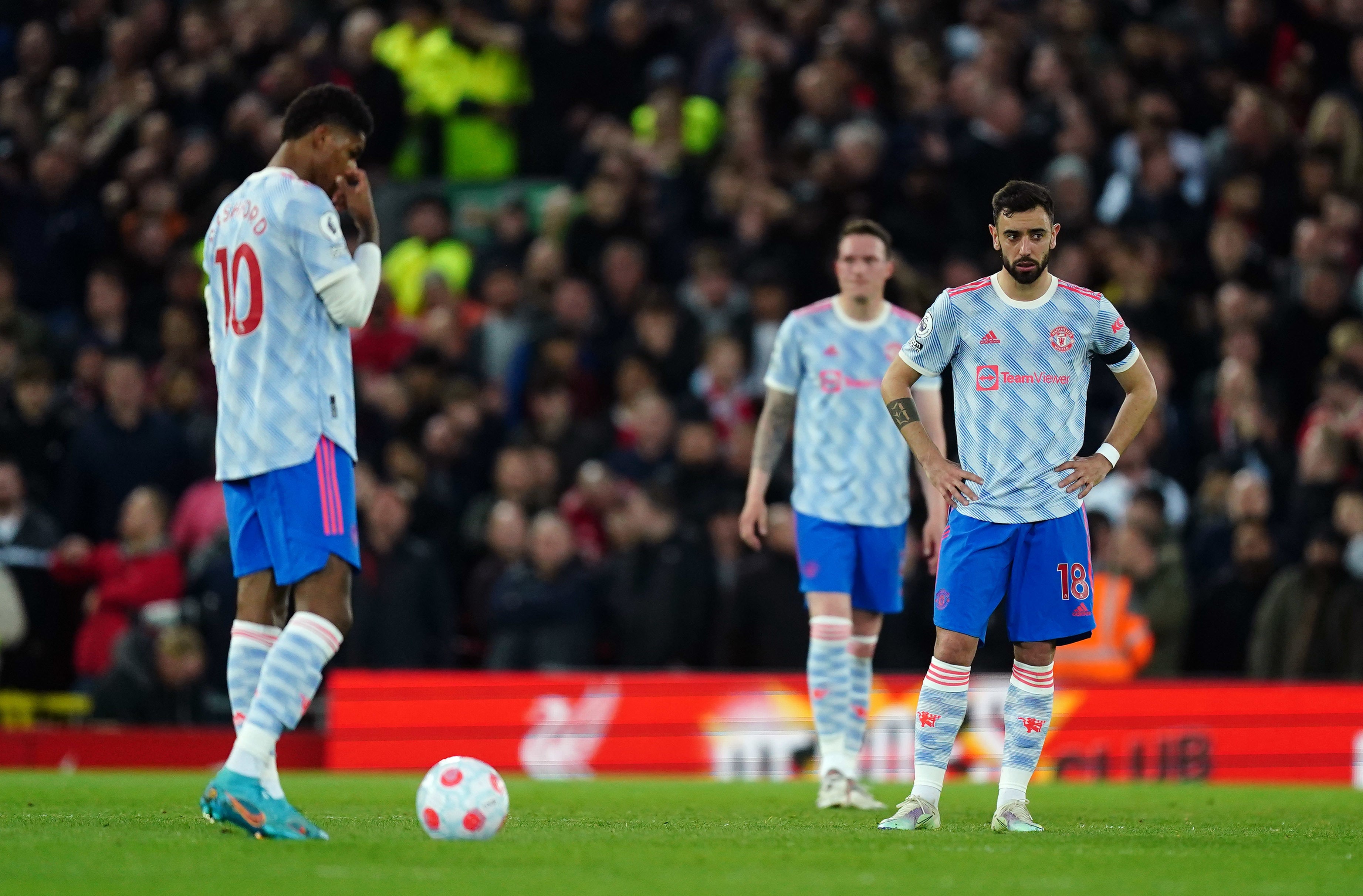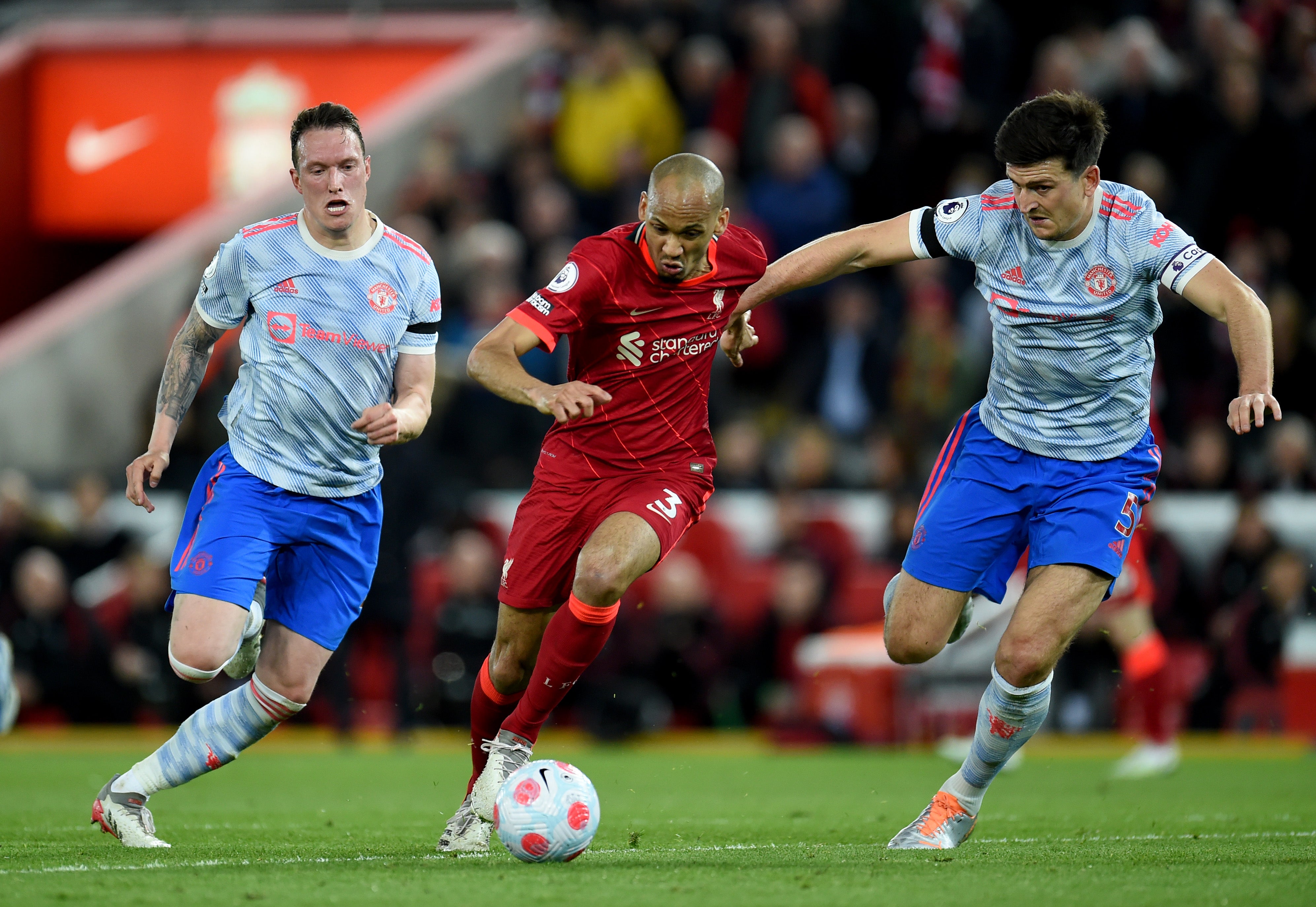Man Utd’s backfiring ‘damage limitation’ strategy against Liverpool the latest footnote in a tale of decline
United slipped to a dismal 4-0 defeat at the hands of Liverpool as they were completely outclassed

Your support helps us to tell the story
From reproductive rights to climate change to Big Tech, The Independent is on the ground when the story is developing. Whether it's investigating the financials of Elon Musk's pro-Trump PAC or producing our latest documentary, 'The A Word', which shines a light on the American women fighting for reproductive rights, we know how important it is to parse out the facts from the messaging.
At such a critical moment in US history, we need reporters on the ground. Your donation allows us to keep sending journalists to speak to both sides of the story.
The Independent is trusted by Americans across the entire political spectrum. And unlike many other quality news outlets, we choose not to lock Americans out of our reporting and analysis with paywalls. We believe quality journalism should be available to everyone, paid for by those who can afford it.
Your support makes all the difference.The whole point of damage limitation strategies is to limit the damage. A quarter of the game gone, two goals down, Ralf Rangnick’s decision to go on the defensive had backfired long before, in a public acceptance he had got it wrong, he reversed tack.
Manchester United, who have scored two goals at Anfield in Jurgen Klopp’s reign, had conceded two in 21 minutes. By the end, United were perhaps relieved the margin of defeat was only four: one fewer than in their previous humiliation at the hands of Liverpool.
Defensive tactics had not brought frugality. A manager who, like Klopp, had helped usher German football out of the era of a back five had begun with five defenders for the first time in his reign at United. The experiment lasted 45 ignominious minutes, curtailed in failure. An indication of United’s inferiority complex was followed by an illustration of their inferiority. They were cut open by Liverpool, their three centre-backs specialising in marking no one. It is supposed to be forwards who excel at finding space; it was an indictment of United’s defenders that they contrived to distance themselves from opponents when the goals were scored.
At the heart of the unholy trinity came the most incongruous presence. The first time Phil Jones lined up for United at Anfield, it was in a very different era, trio and position, in a midfield with Darren Fletcher, now United’s technical director, and Ryan Giggs, now 48 years old. A decade on, just his second start in 26 months came as he separated Harry Maguire and Victor Lindelof. It lasted a mere 45 minutes, culminating in Jadon Sancho’s entrance. United were better playing a formation they were used to.
But by then, they had ensured history repeated itself; neither tragically nor farcically as much as predictably. Jose Mourinho lost at Anfield after supposedly pursuing a policy of safety in numbers and picking three centre-backs. So did Ole Gunnar Solskjaer. Like them, Rangnick had mediocrity in numbers.
They got nowhere near Liverpool when it mattered. Take the fifth-minute opener (and, while managers invariably say they want consistency, United have the wrong sort after being breached inside five minutes twice by Liverpool this season). Each of the trio was dragged out of position: Maguire stepped out ineffectually towards Sadio Mane, but without stopping him from releasing Mohamed Salah. Neither Jones nor Lindelof tracked him – instead Diogo Dalot was in distant pursuit of the Egyptian – and neither of them stopped Luis Diaz from meeting his cross.
Or look at the second. This time Lindelof was Mane’s non-marker. Salah was isolated against, and behind, Dalot again. Three centre-backs and it was too easy for Liverpool. For Maguire, such occasions feel exercises in cruelty. He supplanted Virgil van Dijk as the game’s most expensive central defender and comparisons feel unfair. Maguire had a harrowing afternoon in October’s 5-0 defeat. His campaign has scarcely got much better and he obligingly stood off Mane when the Senegalese scored the third. The United captain’s season should requires a montage of him looking haunted and a soundtrack by Joy Division; opponents will tear him apart, again.

And yet the nature of United is that the problems are never confined to one department of the team. They had 24 percent of possession in the first half; they were unable to either retain or regain possession. Rarely can a Rangnick team have pressed less. They were not equipped to.
Nemanja Matic, with the youth and mobility of an Easter Island statue, was the defensive midfielder; scarcely the ideal choice against a team of Liverpool’s energy but United had no alternatives with Fred injured and Scott McTominay only fit enough to be on the bench.
Paul Pogba came and went in 10 minutes, lasting long enough for United to concede. Enter Jesse Lingard who, like Pogba and Matic, will leave in the summer and who was brought on some 35 minutes before Sancho.
Aaron Wan-Bissaka swapped flanks with Dalot and deflected in Salah’s second goal. The club with the second-most expensive squad in footballing history looked distinctly patched up. It is a wider story of plans going horribly wrong. Rangnick’s dalliance with a back five is merely the latest, a footnote in a tale of mismanagement and decline.



Join our commenting forum
Join thought-provoking conversations, follow other Independent readers and see their replies
Comments